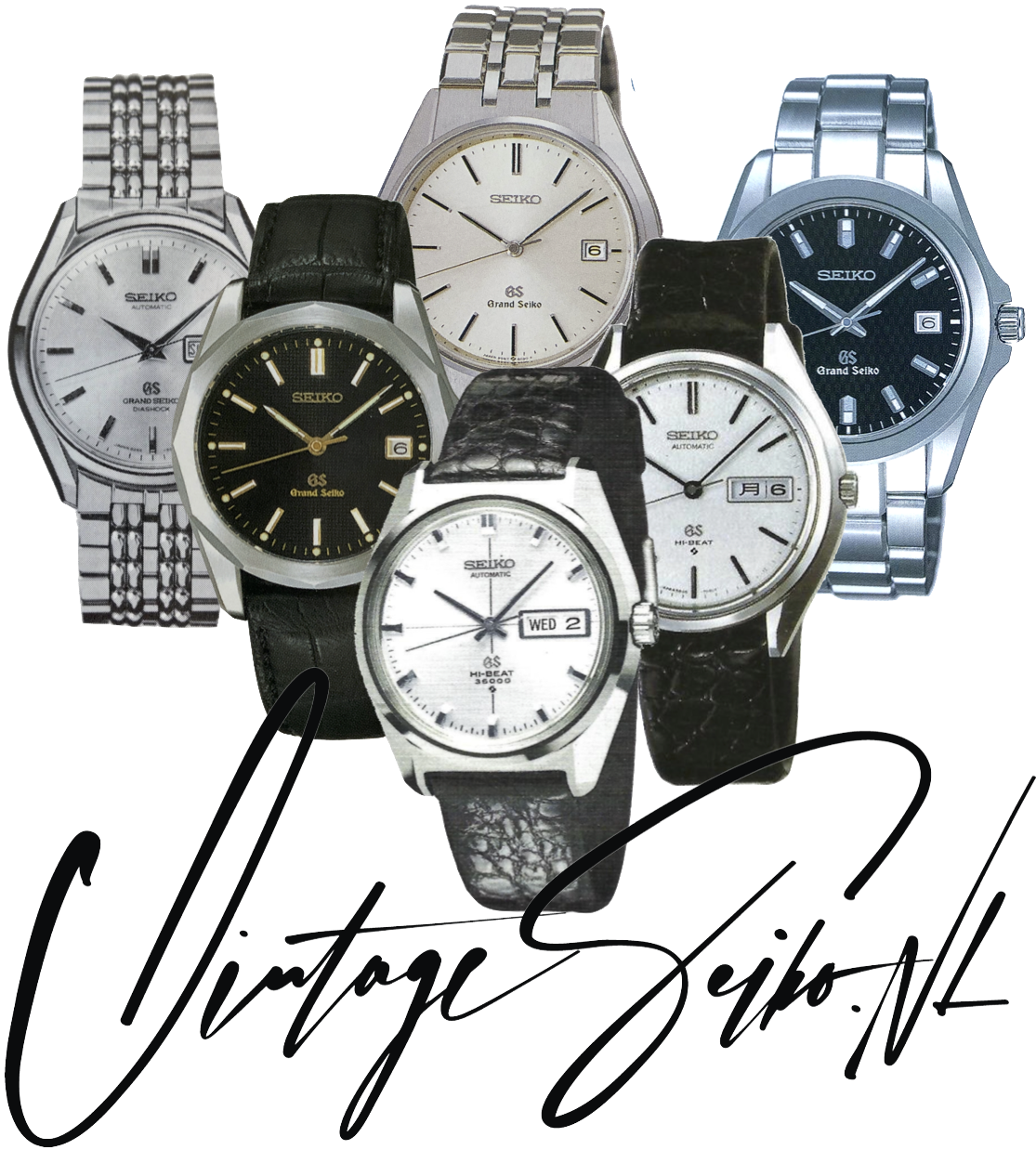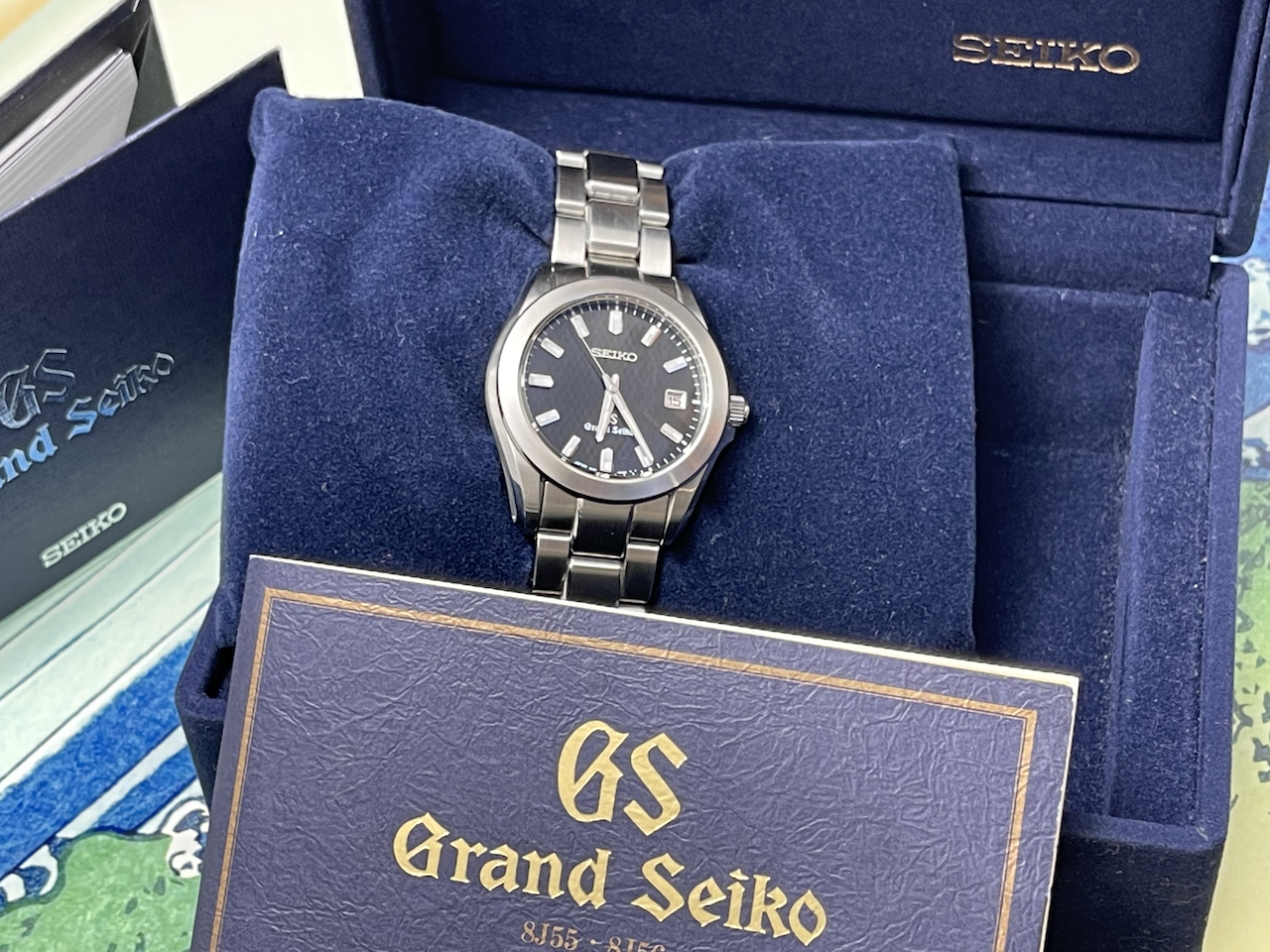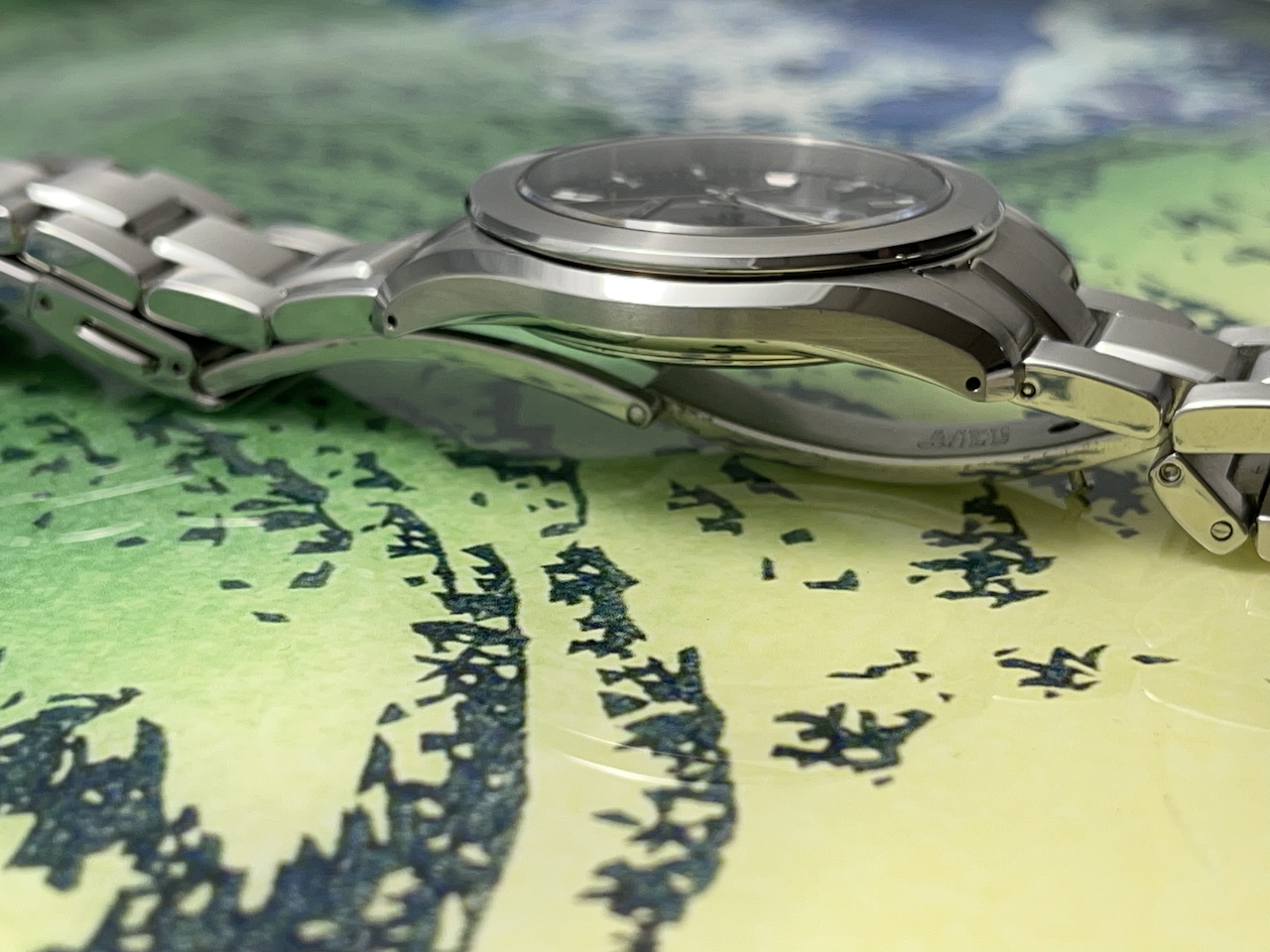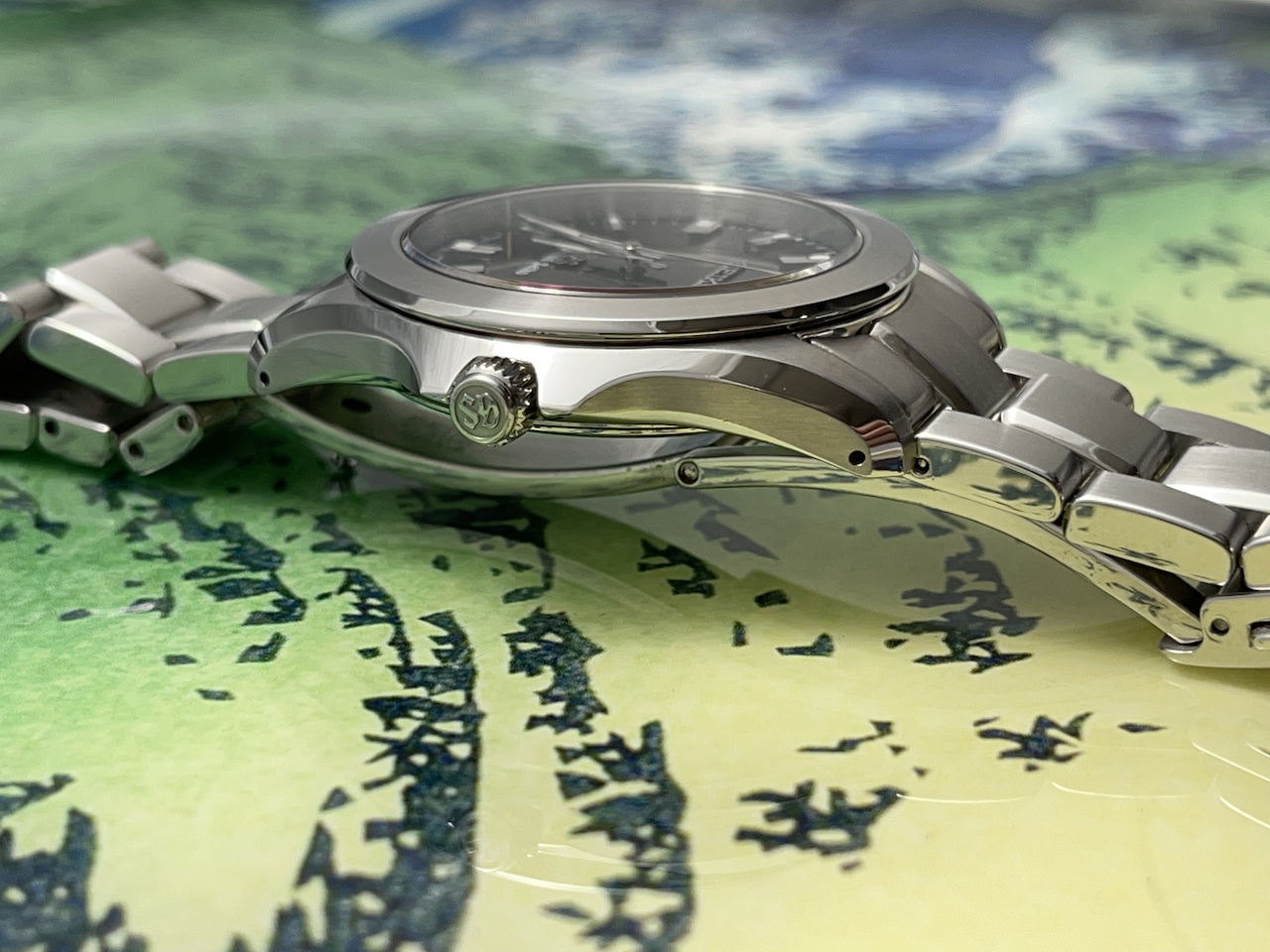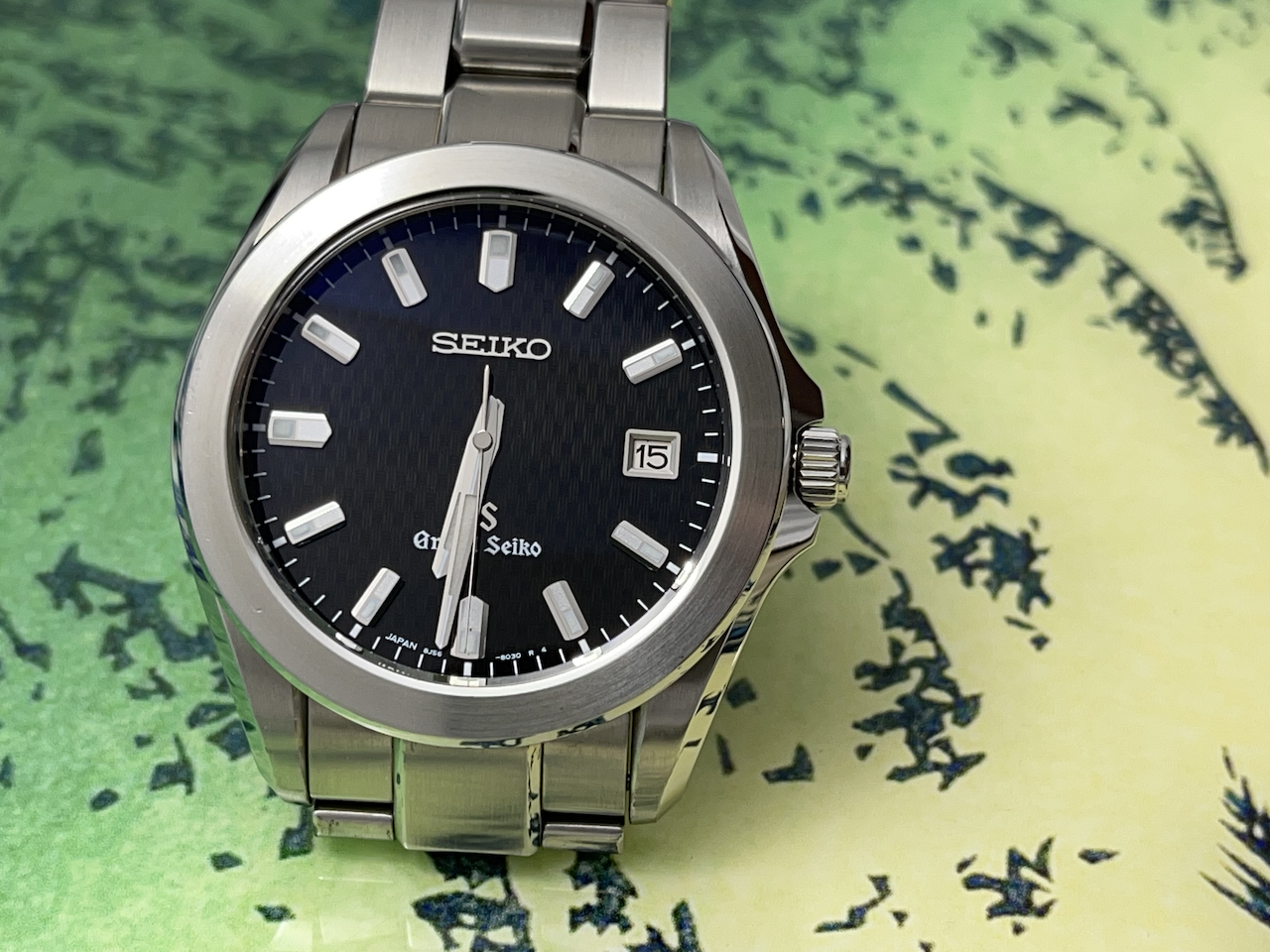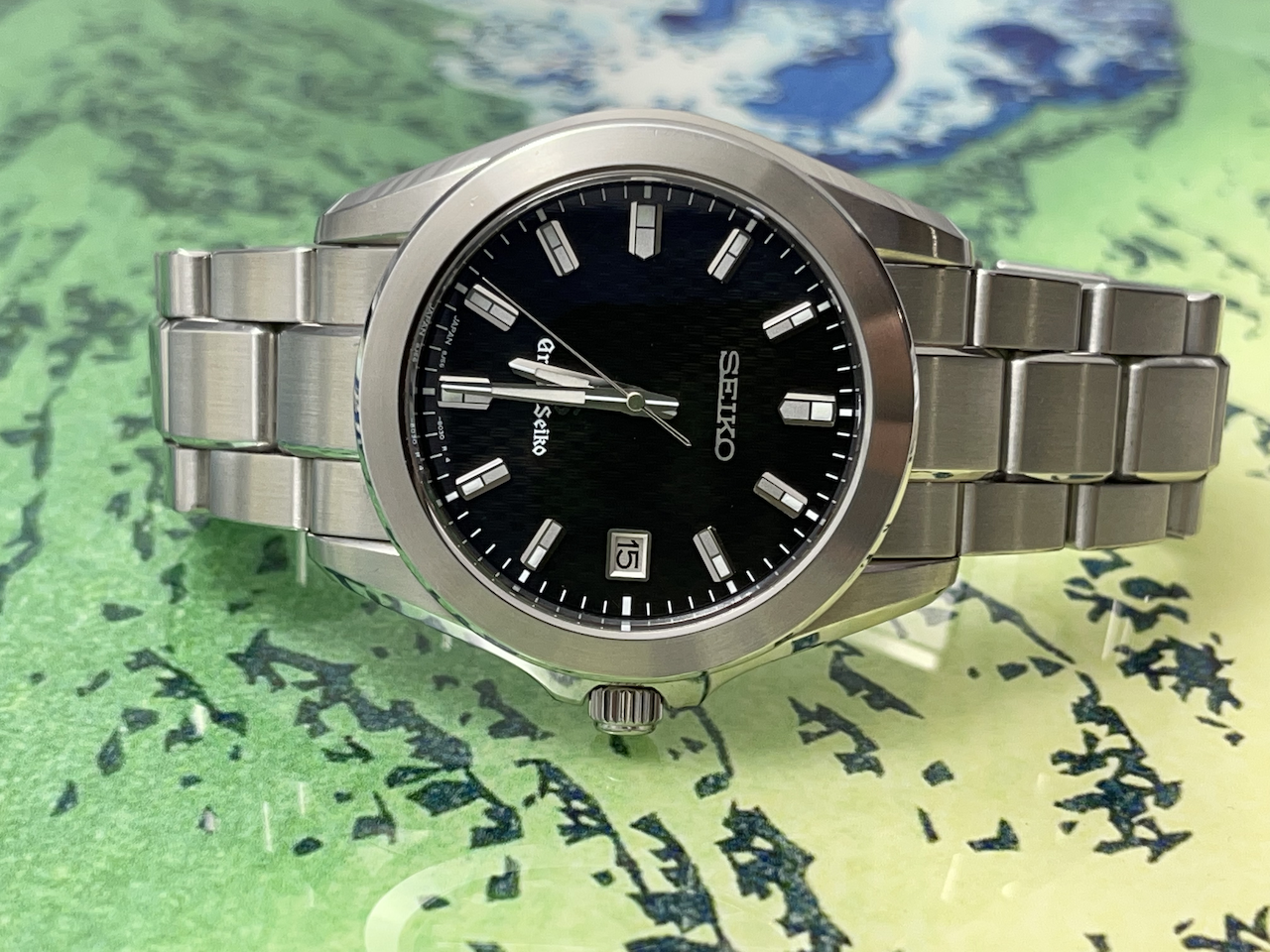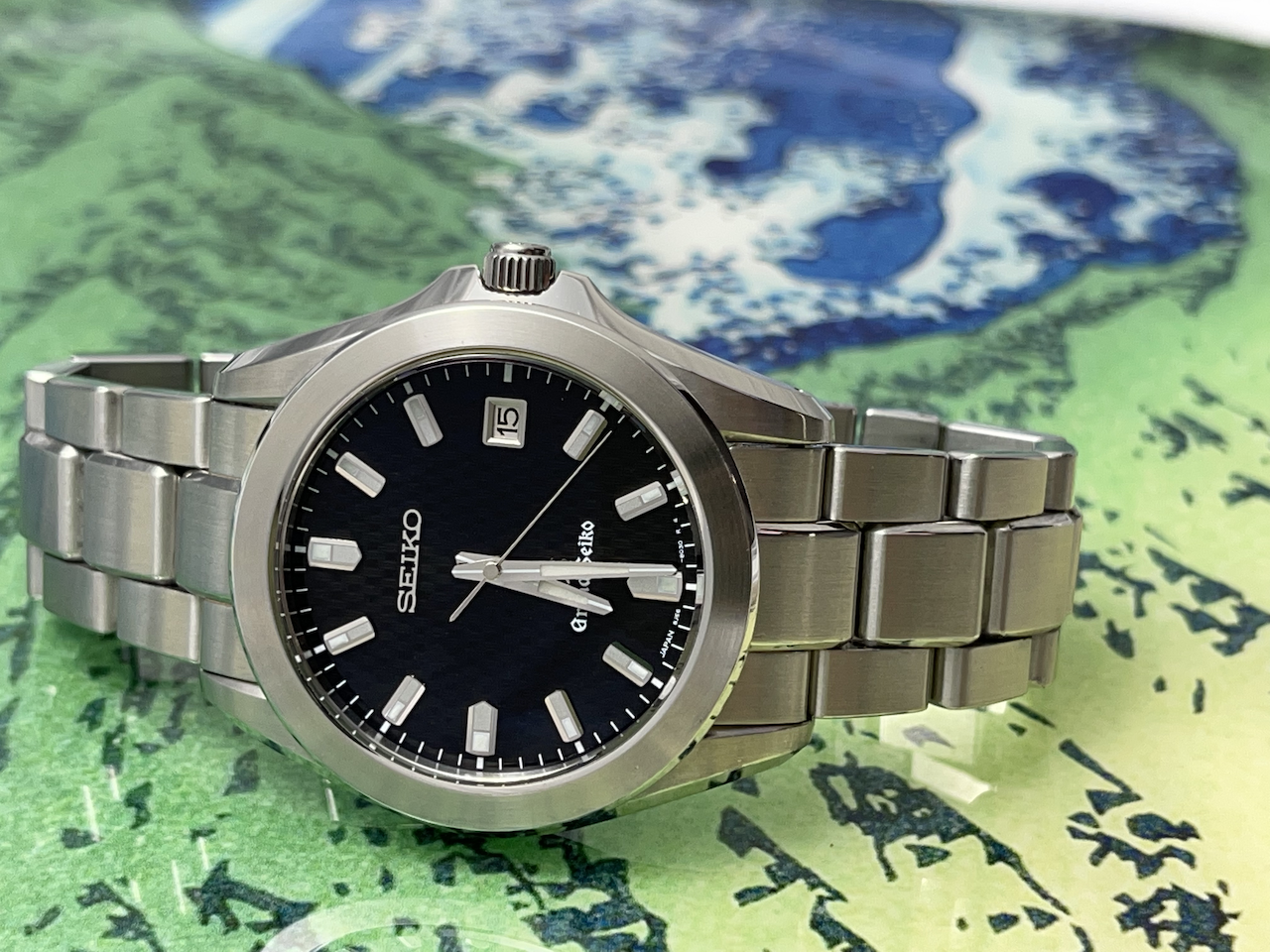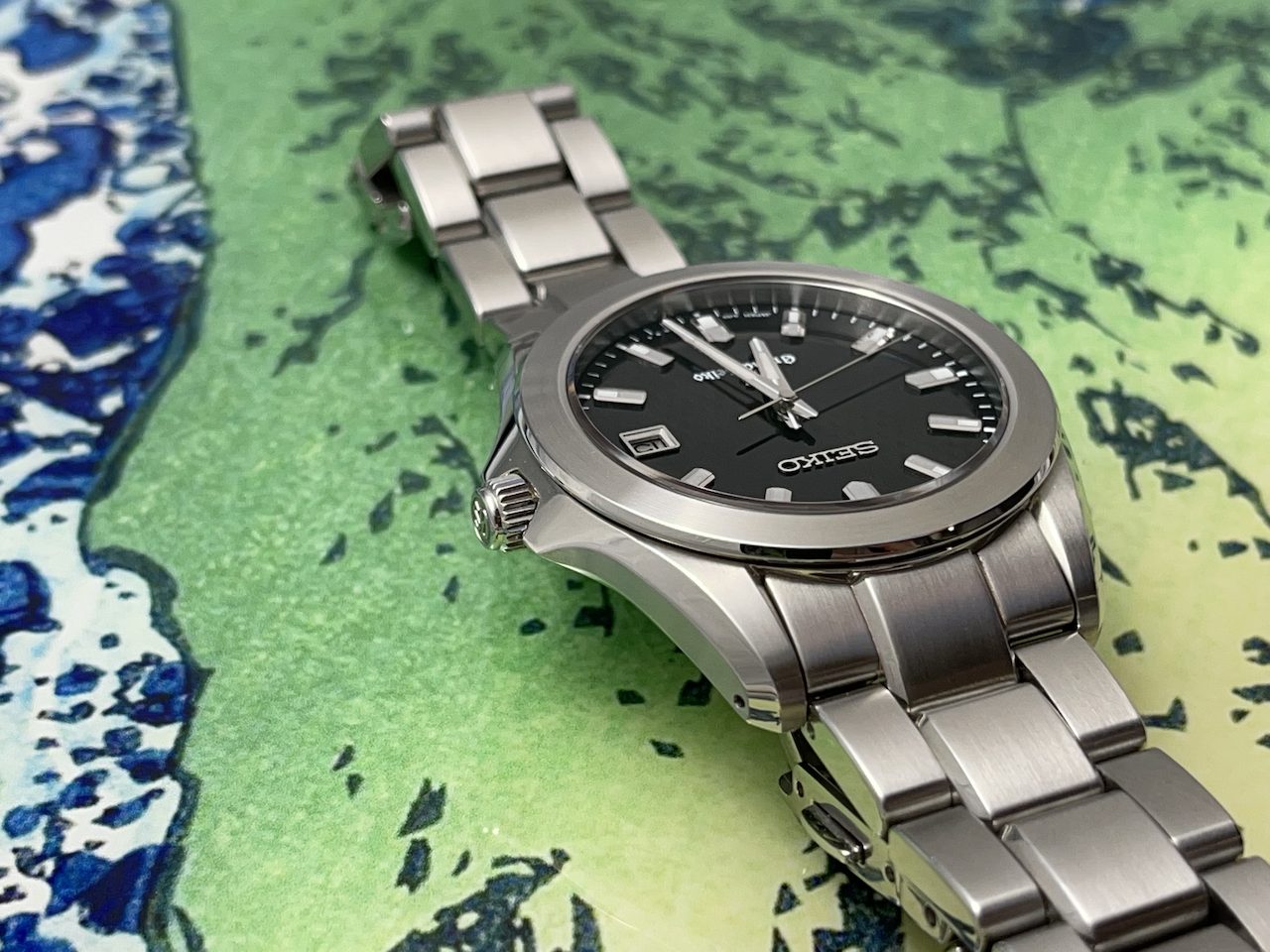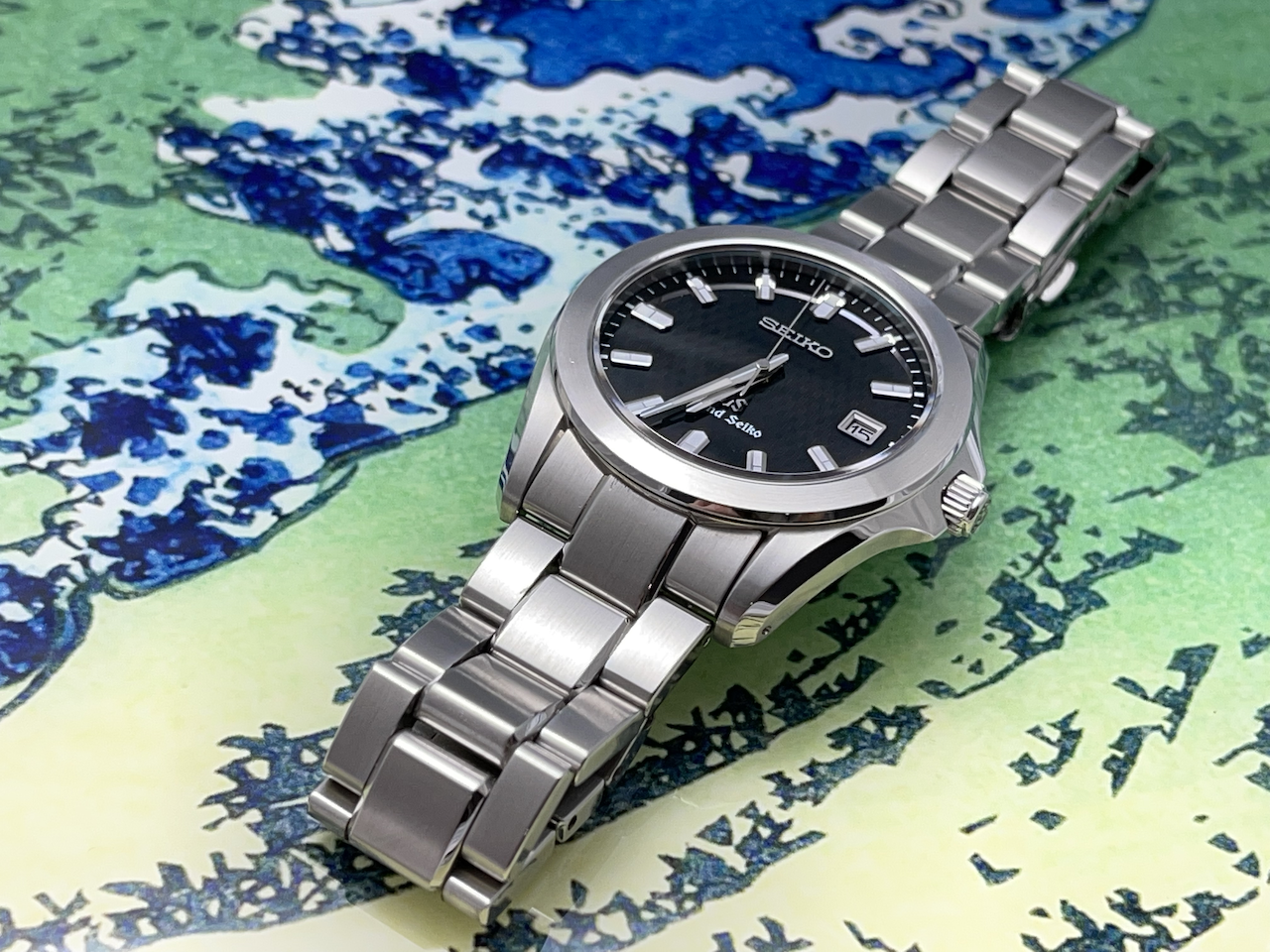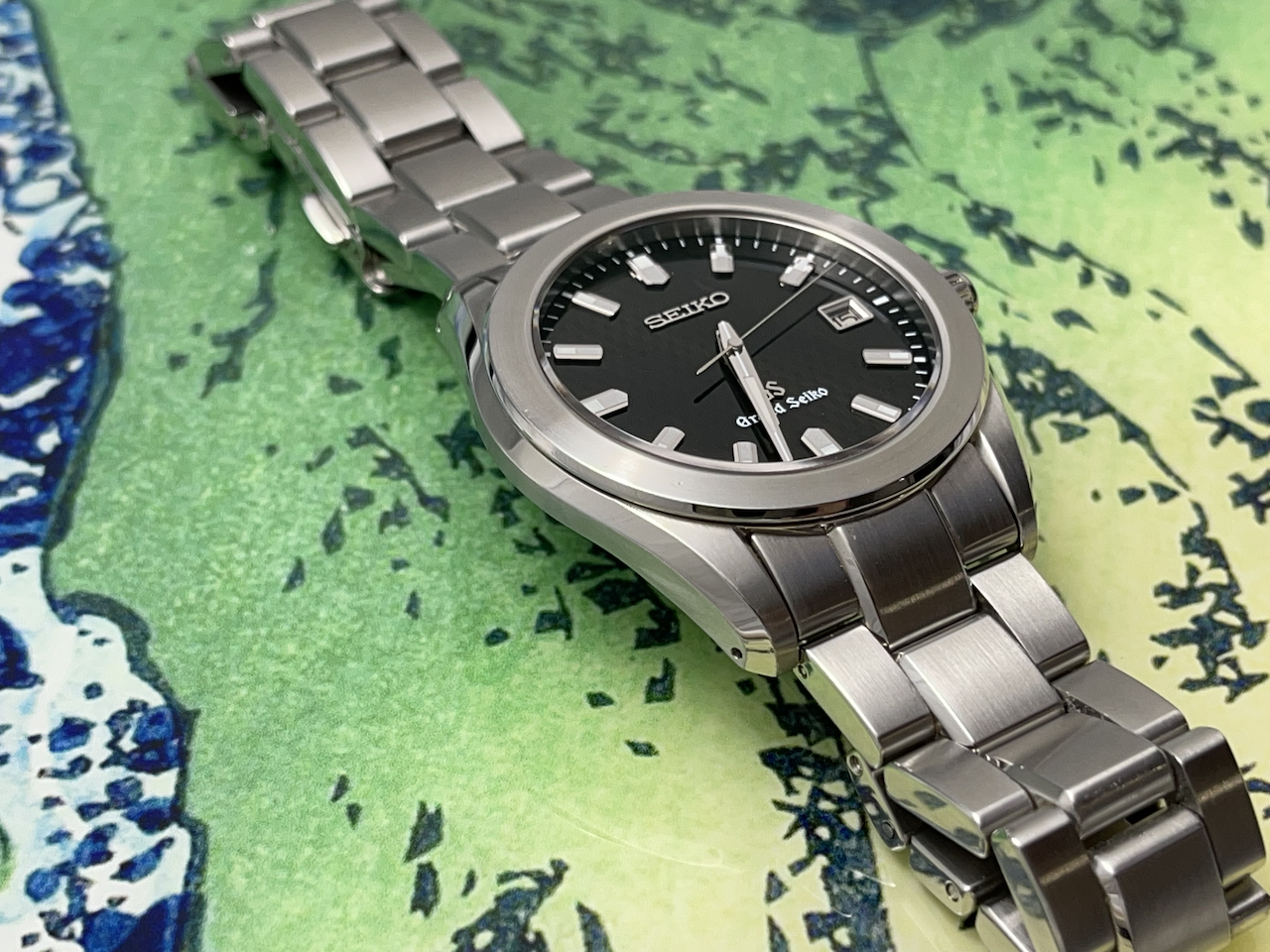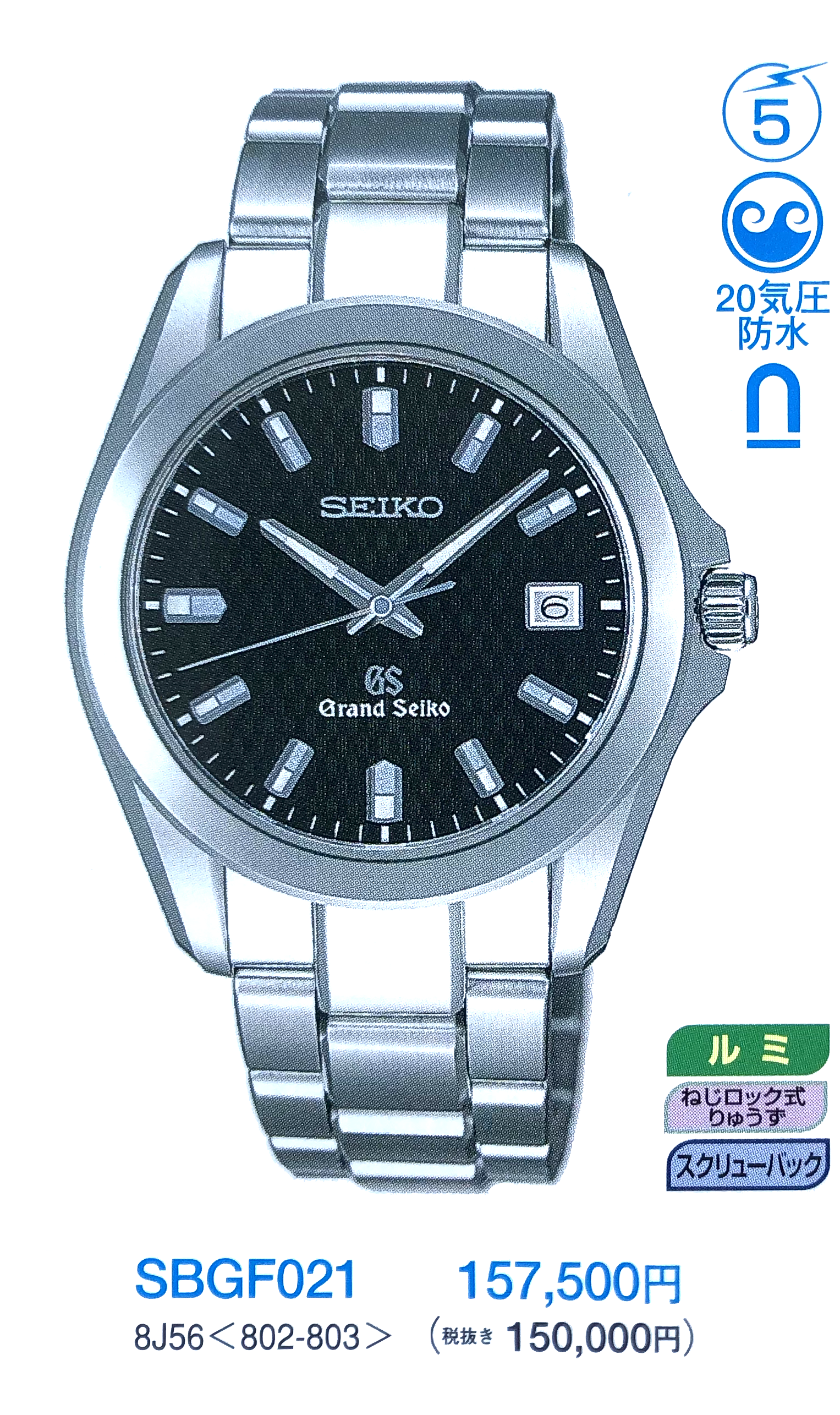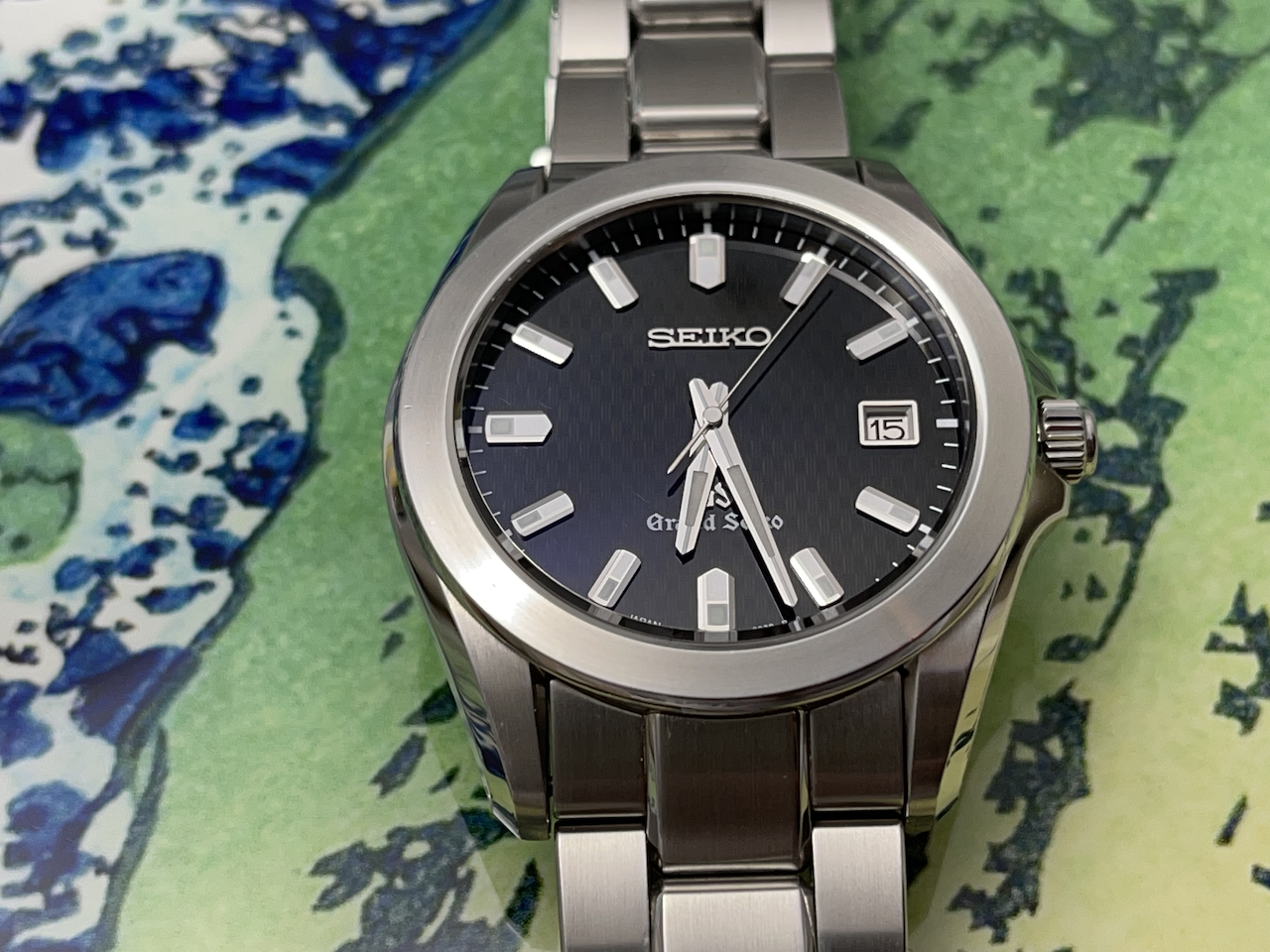
Grand Seiko 8J56-8020 SBGF021 (Sold)
€ 1875.00
Sold out
| About | Details | and then some |
|---|---|---|
| Manufacture | Seiko | Grand Seiko |
| Model reference | SBGF021 | 8J56-8020 |
| Movement | Quartz | |
| Caliber | 8J56 | 8020 |
| Dial | Black Tatami | |
| Case | 38x42x10mm | Steel |
| Lugs | 19mm | |
| Bracelet | D373AB | 18,7cm |
| Crystal serial # | Unknown | Sapphire |
| Timegrapher | Accuracy:+0,3spd | |
| Jewels | 9 | |
| Serial # | 27xxxx | Production: 2002-07 |
| Condition | Excellent | |
| Service | Not required | |
| Box & Papers | Box | Papers |
Grand Seiko SBGF and the 8J movement in general was produced from 1996 to the end of 2010, with model SBGF029 alone representing the caliber in 2009, as far as can be established. Different models saw the light of day but all were eliminated in 2009, sadly they were not produced in the same numbers in all years, as the other calibers like 9F. Some models are therefore pretty rare these days.
Back in 1988, however, the 9581 GS marked Seiko’s first foray into the GS territory after the product line was abandoned in the early seventies, as the Grand Quartz was in the late seventies.
Seiko dropped the Grand Quartz brand in favor of Grand Seiko, with GS on the dial. In reviving GS as a quartz collection in 1988, it was necessary that they achieve the summit of accuracy once again and therefore develop a Voltage Compensated Temperature Compensated Crystal Oscillator module (VCTCXO), featuring thermo-compensation and a rate trimmer..
The 9581 then was a very well made watch, even if slightly small for today's taste. Its movement is a Seiko Quartz Cal 9581A, with 7 Jewels, 32’768 Hz, Thermal compensation, Anti-magnetic and a 3-year battery life. The 9581 is also one of the very few Seiko watches that uses a 17mm lug. The caliber is very high end and is rated at 10s/year, which would make it one of the worlds most accurate watches even today, 20 years later. It is also one of the cheapest ways to get a quartz GS.
The outcome of all this was a new quartz module that was larger and more robust than previous “thin” Seiko HAQs, fitted in practical cases and with legible dials - a Grand Seiko signature of old. The caliber 9581A, later re-designated 9F81, has a Twin Pulse Control high-torque motor making each second the move in two fluid pulses, thereby reducing energy consumption. A backlash auto-adjustment eliminates any error. If that is not enough, instantaneous Date change happens in just 0.5 milliseconds. Furthermore, the movement module is air-tight, ensuring the stepper rotor and lubricants are protected from particles of dust. This last feature maintains optimal performance for an estimated period of 50 years before requiring a service.
One cannot ignore that the GS Quartz is the true GS, arguably more so than the modern mechanicals. In 1992, the last year of the 9587 production, the GS line was not only continued by the 9F81 movement but also extended by Grand Seiko reference SBGF. This one was exclusive for the 8J movement and produced from 1996 to 2011 with thirteen models representing the line. It is considered within Seiko to be one of the very best quartz movements, much better than the well known 9F and much more stable and accurate. It was expensive to produce and parts of the design made it hard to fit into thinner cases. The more cost effective 9F movement on the other hand is less stable, not so resistant to temperature and magnetic fields and costs about 30 percent less to produce than the 8J. But, importantly, it is thinner, and uses more common parts, therefore the frame can be used for a number of other movements and watches.
However, the 8J is, without a doubt, the most robust high accuracy quartz movement ever made. Even the fact that it had to be thicker works in its advantage resulting in even better thermo compensation performance.
The information coming from internal specs from Seiko in Japanese, on the 8J and 9F movements, is universal, saying the 8J was the last “cost be damned” very robust movement they did. The internal feeling is the 9F is less robust, less accurate, less shielded, and, yes, some of them scoff at the lack of an independent hour hand with which one easily adjusts to other time zones on the 8J.
The very high accuracy +- 5 second twin quartz movements that went before were extremely expensive to produce and were not robust in field use. Their biggest problem was they tended to get fried if worn in hot baths or shower rooms - a real issue here in Japan where the harried salary man has his watch with him in the after work Sauna to benchmark the last train. The 8J was the answer to those concerns.
The Grand Seiko SBGF021 was introduced in 2000 (+2009) and harks back to design characteristics of the seventies, for one the shape of the case. It is very reminiscent of Seiko’s crazy days, especially in the way in which the crown side is designed. It is just like some King Seiko Vanacs and of course the Red Alpinist, but more distinguished. Also, the three dimensional effect of those watches is present here, caused by applying the indexes, the SEIKO and the GS logo to an absolutely stunning effect. The hands are of course baton style, and even the seconds hand is the pencil of old. What I like about that is the match of these design elements, the hands are at their centre about as thick as the hour indices, and where the minute hand meets up with the indices it overlaps just the raised part of it. Just great! And the seconds hand is the same width as the minute indices. The most disturbing and distracting aspect of “modern” Grand Seikos is a mismatch of the aforementioned design choices. The SBGX061, -059 etc. just do not speak to me as for instance the perfect harmony of a Grand Quartz 9940-8000.
Ok then, no critique? Well, one other defining feature of the SBGF021, the wide brushed bezel, may be more susceptible to scratches and scuffs than for instance the narrower, highly polished one on the SBGX061. But then again I notice the capped seconds hand, that ads to the luster that many of its 9F family members simply do not have.
